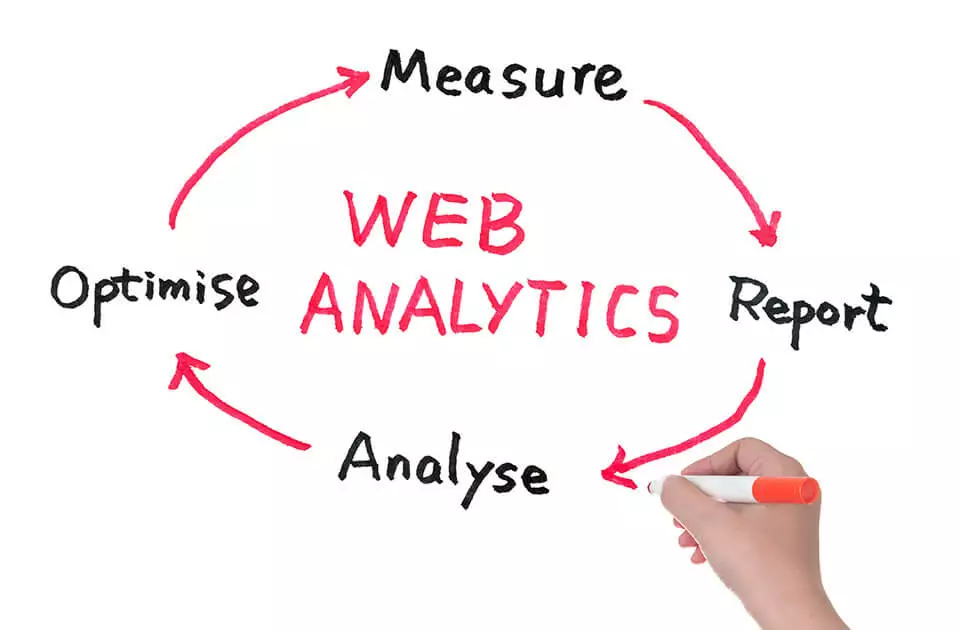Website optimisation: how to use web analytics
In any online business, the target audience should always be the focus. Every website operator should ask himself or herself what customers expect from their website, what their needs are, and how the website can be adapted to suit these needs. The only way to get answers to these burning questions is to constantly evaluate and optimise your marketing techniques. Web analysis, also known as web analytics or traffic analysis, provides an incredibly useful basis for this process. In online marketing, the technical requirements involve gathering data that reveals information about the online behaviour of potential customers. When used correctly, this insight can lead to successful marketing campaigns and, in turn, increased turnover.
How do web analytics work?
You can measure the success of your advertising and content strategies with web analytics. You can also determine the status quo by closely monitoring how user behaviour on the website changes. There are many tools designed for collecting and analysing information about individual users as well as groups, which present results in the form of various key figures. These figures, (also known as key performance indicators or KPIs) can be used to fine-tune your marketing campaigns, which will lead to a positive development, depending on your objectives.
One question that is particularly relevant to web store operators is which search queries are used to find their sites. A careful analysis of this will reveal any gaps in your website’s keyword optimisation. For example, if your men’s clothing store comes up when a user searches for women’s shoes, this indicates that your content needs to be optimised. Observing how users browse the website, and all the possible diversions they could encounter, enables web store operators to tailor the website’s navigation and internal linking to the target audience. This in turn serves to make it easier for the customer to find the product they are searching for.
Due to the enormous data volumes on websites, you can easily find out which areas or the website work particularly well, and should be expanded (e.g. your most popular blog entries). In addition, web analytics also allow website operators to see at which point users leave the website, which indicates the pages that may need optimising.
Web analysis…
- … can identify weak points
- … helps to highlight strengths
- … steers the company’s strategic focus
Goals of web analysis
Of course, the fundamental goal of web analysis is to ensure the long-term success of a website. But when it comes to short-term goals, every business prioritises different individual goals. These include:
- gaining new customers
- increasing customer retention
- increasing the number of visitors
- improving the conversion rate
- improving usability
- monitoring the success of advertising and marketing campaigns
Your individual goals determine which KPIs are most relevant to your business, and from these figures, you can develop appropriate actions. This allows you to achieve short-term goals such as improving efficiency or strengthening usability.
The most important KPIs with web analytics
A website’s KPIs (key performance indicators) can be calculated using various web analysis tools like Google Analytics. The most important figures include:
- the number of visitors
- the source of visitors
- the retention time
- the bounce rate
- popular user paths
These key figures can only be used in the correct context. An accurate reading can be taken by using a suitable survey period, as well as by drawing comparisons to older, industry-specific figures. By measuring these figures over an appropriate period of time, users can differentiate between fluctuating and constant trends. It is also important to conduct regular analyses in order to be able to counter any looming dangers. Find out more about important key figures in online marketing here.
Data collection & analysis tools
Web analysis combines many complex data sets collected from servers and clients. The only way to make sense of this mountain of data is to organise and analyse individual data sets, in order to display them in simple and easily comprehensible graphics. This is where web analysis tools come into play. From free software solutions (with a focus on non-commercial use) to cost-intensive packages for bigger businesses, there’s a wide variety of tools on offer, with each program suited to different budgets and areas of application. These programs are all based on either Logfile or cookies, or they use a mixture of the two. Google Analytics is the by far the most popular of these tools, with over 80% of web analysis researchers using this program and its diverse range of functions. There are, however, many alternatives to Google Analytics that have different strengths, such as placing more emphasis on the protection of users’ data and privacy, for example.
Advantages of web analytics
Web analytics answers two important questions: who are my customers? And how can I reach out to them and adapt my marketing methods to suit their needs? The abovementioned key points provide an insight into the potential customer base, laying the foundation for a successful marketing campaign.
If you know exactly how customers find your site and which products or information are most popular, you can adjust your website accordingly and communicate more easily with your target audience. By using web analysis tools to collect data about visitor sources, keywords and search terms used to find your site, cost per click, and other quantitative data, you can draw conclusions about your target audience’s interests, habits, and preferences.
Furthermore, by examining the responses to individual marketing techniques more closely, you can use the collected target group information to deduce even more recommendations. In finding out how many people read newsletters, click on posts, or buy products, you can discover which marketing tactics work for you and your business.


